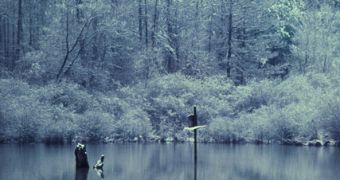Nature appears to be slowed down by the coming of winter, which might make you think that scientists could also become a little lazy during this season. Well, you couldn't be farther from the truth, as nature keeps spoiling us with scientific treats. It all starts with the weather, which gets much colder. But the harshness or the smoothness of one winter are influenced by the regular warming and cooling of the Pacific ocean, called El Nino/La Nina, which influence global weather patterns.
For instance, this gets the nor'easter on the US East Coast (caused by a low pressure front going northwards which collides with a high-pressure one made of freezing, dry air going south), bringing along torrential rains and blizzards. It may sound scary, but it's definitely not as bad compared to the "Home of the World's Worst Weather," on New Hampshire's Mount Washington. The atmosphere there is musty wet, while a blistering cold and a foggy air add to the ghastliness of the area, topped by gusts, the fastest (372 km/h or 231 mph) being recorded in 1934.
Winter also causes the glaciers and the icy shelves to erode, contrary to what you might think, and the collapse of the Wilkins Ice Shelf in Antarctica proves it. With all these creepy events, you must start thinking that it would be a great idea not to leave the house at all, but scientists warn that this is how the flu is best spread – in closed spaces, like houses or classrooms (where children don't cover their mouth and nose when coughing or sneezing). But winter is not all bad.
Quite the contrary, you may let yourself be charmed by the uniqueness of each snowflake, even on molecular level, but more pregnant in large, complex, snowflakes combining more ice crystals, or by the animated life that wet winters bring with them in the hot, arid Death Valley every once in a century. The wet winter season makes flowers bloom, attracting insects, which, in turn, appear interesting to birds and tiny rodents, the basic diet for snakes and foxes.
If this is not your cup of tea, then maybe you should look toward the sky, which is much clearer in winter, due to low moisture, providing a much better view of constellations or the northern lights. Or, if you're lucky to be in the right place at the right time and can endure the extreme cold (-176 Fahrenheit or -116 Celsius), you may even get to see the nacreous clouds, (or the mother-of-pearl, as they're called at times), spawning around polar regions.
On your way to any of these events, be sure that on February 2nd, on Groundhog day, you're in Punxsutawney, Pennsylvania, to check whether Phil the groundhog sees its shadow, which means that the next six weeks or so of winter will be tough, otherwise spring is near. A Canadian research indicates that its predictions are accurate approximately 37% of the time, and a US professor states that leaving the burrows early is rather associated to fatty acids than to shadows.

 14 DAY TRIAL //
14 DAY TRIAL //